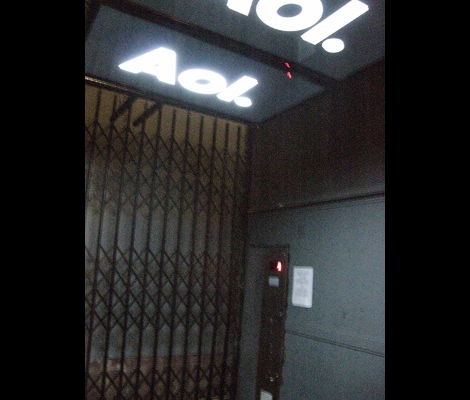
[Ben Peoples] works in theatrical electronics. Sounds like fun, and here’s an example of the kind of stuff he does. We’re not sure what event this installation was used for, but if the elevator ride needed something flashy just think of what the party room must have looked like. These HDTV screens on the ceiling of the elevator play different clips when the elevator is moving up or down. The challenge for [Ben] was to find a way to make it work without tapping into the elevator electronics or requiring any button presses.
The first attempt at sensing the elevator’s travel was done with an accelerometer. The problem with this approach is that an accelerometer only senses change in acceleration and this method proved to be fairly error prone. [Ben] switched over to a reflective sensor which performed quite well. Since most of these sensors will only work within about an eighth of an inch he ended up building his own with a LDR and a couple of amber LEDs.
[via Reddit]















Now I want to see an elevator with a ceiling that displays a moving view of the elevator shaft as though there were no ceiling. :p
I don’t see why he didn’t use connections in the controller, he’s already made illegal alterations by removing the hatch door. Most elevators have spare wires in the travel cables, it would have been a simple implementation. Tie into the JBox on the top of the car and run spares through the up/down relays. Even if he wasn’t able to go that route, he could have tied into the PID of the car station, the selector unit (LU and LD), tied into the unused limit contacts, or any other up/down contacts. There are more than enough ways to get directional data from the controller without interfering.
Jinx,
Not sure what you mean by “removing the hatch door”? We actually had an elevator service guy in the morning of the gig, he signed off on all the stuff we did.
While we could physically have tied into the controller without impacting it, this was part of a rental, and they didn’t want us messing with it.
Thanks!
Elevators require a hatch door in the ceiling of the car for emergency exits. After looking again, you’ve got a hinged panel at the front of the car. Although elevator mechanics have the authorization to make required modifications to lifts, the only person who could legally sign off would be a state inspector. If they’re as strict there as they are here (varies state to state) you may have some issues passing in the future. Elevator code is vast, the right inspector on the wrong day could end up costing you loads of cash and possibly a locked out lift. I love where this build is going, hope all goes as planned.
Couldn’t he just have used an ultrasonic distance sensor to check the distance from the bottom of the elevator to the bottom of the shaft? Rip apart an ultrasonic tape measure. :)